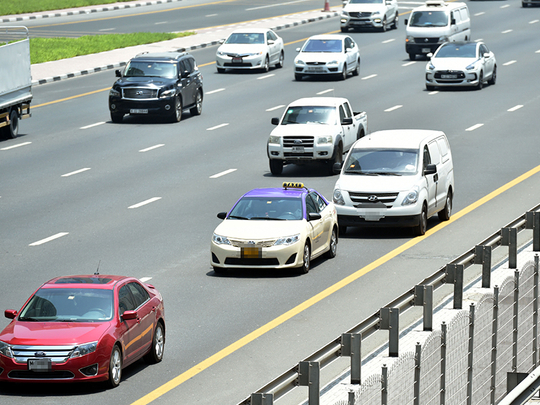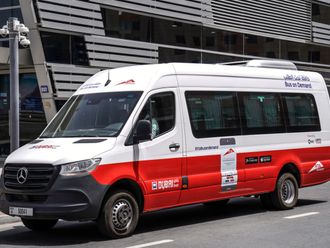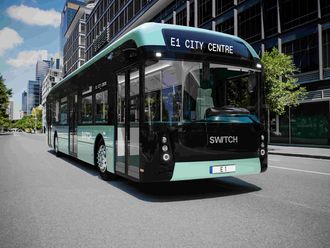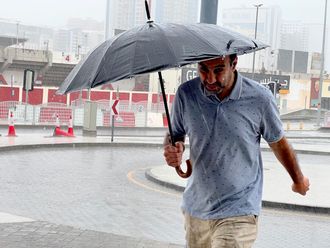
Dubai: It’s payback time for brake-pedal-challenged road bullies who have plagued Dubai roads and highways for years.
Starting today, distance-tracking roadside radars will photograph reckless tailgating by motorists who do not keep a mandatory minimum five-metre buffer zone between vehicles when travelling over 80km/h.
Aggressive drivers in supersized SUVs hurtling along at breakneck speed while flashing their headlights and riding the rear bumpers of cars ahead to clear the fast lane will pay a hefty price — a Dh400 fine for each instance of bumper-riding caught by the new tube-shaped roadside enforcers.
Cars travelling under 80km/h, such as those mired in bumper-to-bumper traffic jams, will not be required to keep the same distance because speeds are very low. The measure is the first step in the fight against tailgating, an endemic problem which claimed 26 lives in Dubai last year and another 11 lives so far this year, say Dubai Police.
Maj Gen Mohammad Saif Al Zafein, Assistant to the Dubai Police Chief for Operations Affairs, unveiled in June the latest road safety measures as part of a new ‘Keep a safe distance’ campaign. Last year, Dubai traffic authorities issued 69,964 fines for tailgating and, so far this year, another 19,975 following-too-closely tickets were issued.
Thomas Edelmann, founder and managing director of RoadSafetyUAE, said after already reducing speed limits in certain highway corridors across the emirate, Dubai’s tailgating crackdown is yet another milestone for authorities along the road towards meeting the UAE Vision 2021 National Agenda goals.
In the next six years, Vision 2021 is set to slash road fatalities by more than half by achieving a goal of three road fatalities per 100,000 of the population, from 6.5 road fatalities per 100,000 people as recorded in 2012.
“This will catapult the UAE within the top five safest countries in the world,” Edelmann told Gulf News on Tuesday. “They want to change the UAE driving culture to steer it away from driving against each other to driving with each other.”
Edelmann praised road officials and Dubai Police noting that “it’s great for road safety that police are investing in the equipment. Road safety is not rocket science, it’s very pragmatic”.
He said the five-metre distance is a good first start but, as reported earlier by Gulf News, suggested that authorities will need to re-examine the distance given that most countries in North American and Europe recommend at least 40 metres and higher between vehicles travelling at 80km/h or more.
Robert Hodges, CEO of Emirates Institute and an internationally recognised road safety expert, told Gulf News that the easiest way to avoid paying costly tailgating fines as well as keep safe is to remember that it’s about space.
“It’s all about creating space around your vehicle,” Hodges said.
A simple formula he has relied on for years equates to “time = space = safety.”
One of the main benefits of cracking down on tailgaters is also improving the mental state of all drivers on Dubai roads, Hodges said.
“Tailgating impacts drivers who are being tailgated. It almost forces the person in front to drive badly, It leaves a driver in a bad mental state for at least 15 minutes [after being aggressively tailgated],” Hodges said.
A law-abiding driver who has been essentially forced out of his or her lane by an aggressive tailgater can experience increased respiratory rates, a higher heart rate, and physical ailments that can also place the driver in danger when driving on a highway.
A simple way for all motorists to adjust to the latest safety push, he said, is for drivers to simply build more time into their day.
“Leave five minutes earlier to take the pressure off your journey,” he said.
He also encouraged drivers to adhere to the two- or three-second rule on roadways to more accurately keep a safe distance.
The two-second rule, for example, shows that a driver who leaves two seconds of travel time at 80km/h between their vehicle and the car in front of them creates 44.5 metres of distance, which is a universally accepted safety gap in which to stop in the event of an emergency.












